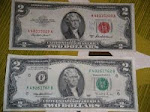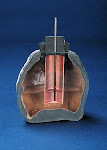Here's a clock I built that ran for 37 minutes ... then stopped...having run out of energy due to escapement problems.
Recommendation: I wish the person who designed this clock would have made it a recoil escapement - not a deadbeat escapement - that would have allowed for some error.
The axles all had to be hand ground from steel dowels in a drill press, sandpaper on sticks in the right hand and a micrometer in the left hand to fit the axles into the brass sleeves - a custom job. The numbers on dowels and the numbers on brass tubing inside diameter are not in the same universe once one attempts to fit the dowel into the tube as an axle. Anyway - if you wish to build one of these the axles are a pain.
A tool I became aware of on this project is the brad-point drill bit. Essential when drilling holes in the clock frame and gear centers for precision. They are mentioned in the plans - and are essential. Still - the holes in the frame were off by a half-millimeter in a spot as careful and painstaking as I was... arghh.
Interesting fact:
When the "mouse ran up the clock" I've heard that the reason the mouse ran up the clock was because tallow was used to lubricate the wooden gears - and mice like to eat tallow.
The clock in the video below was cut out of Baltic Birch plywood on a DeWalt scroll saw, using plans from Scroll saw magazine.
There is a wood-gear clock in the James Monroe house here in Charlottesville, Virginia. It was not running when I took the tour.
Legend has it that wooden clocks were made by Americans because metal normally used for this purpose was scarce. I've read and heard that some wood-gear clocks had brass gears in the escapement (the part that makes the tick-tock sound and suffers wear.)
2.18.2010
Subscribe to:
Post Comments (Atom)










































































.jpg)













No comments:
Post a Comment
Only by exercising YOUR freedom of speech shall you keep it. Comment now - I can handle it....
Note: Only a member of this blog may post a comment.